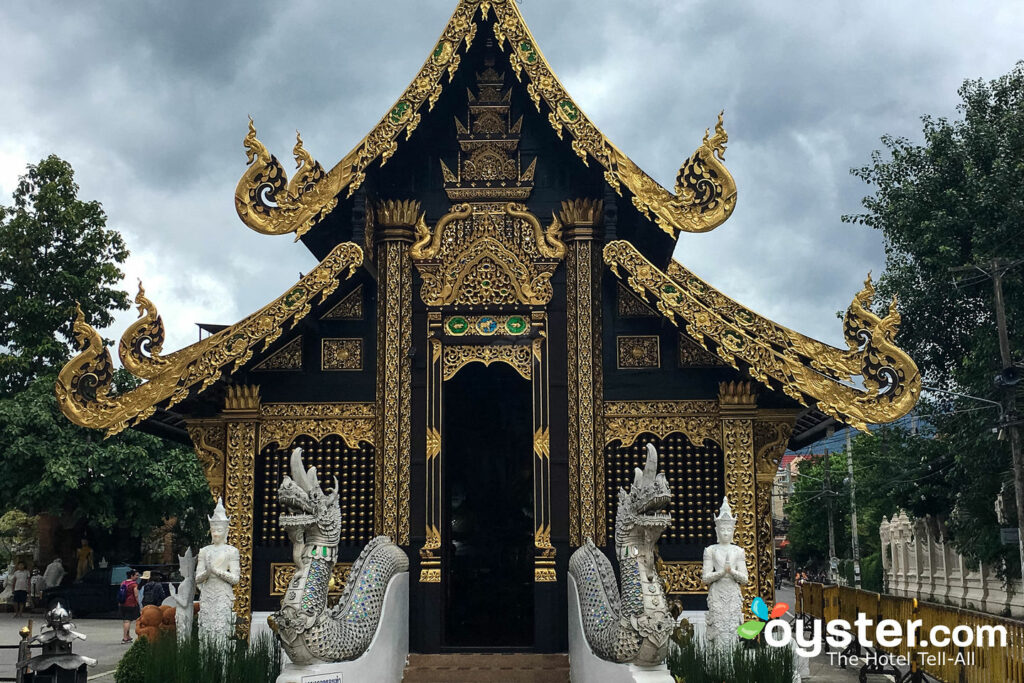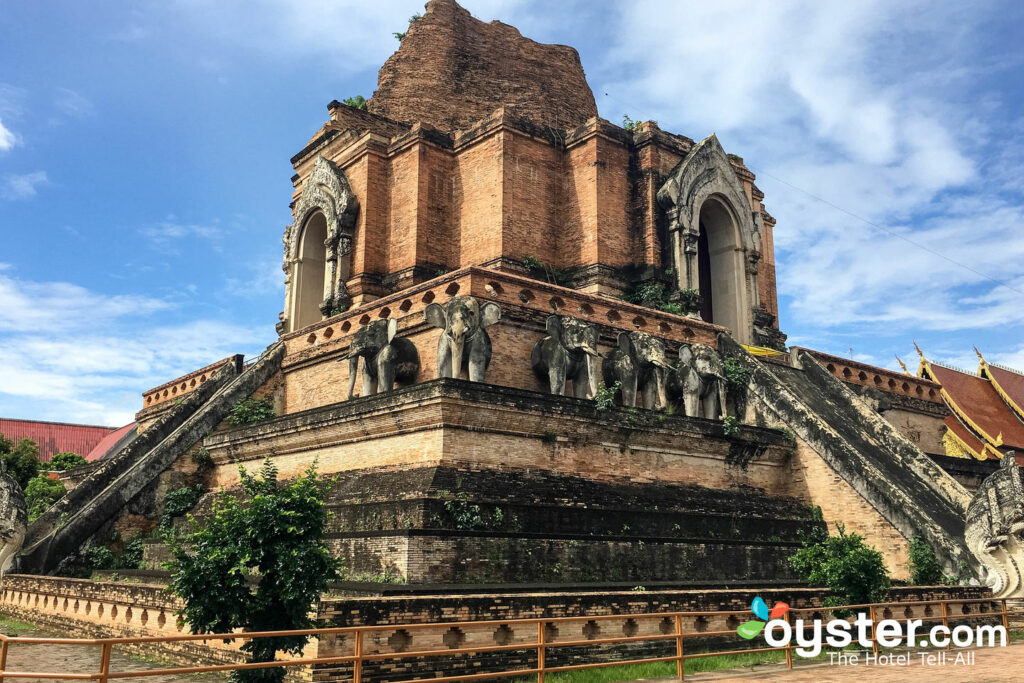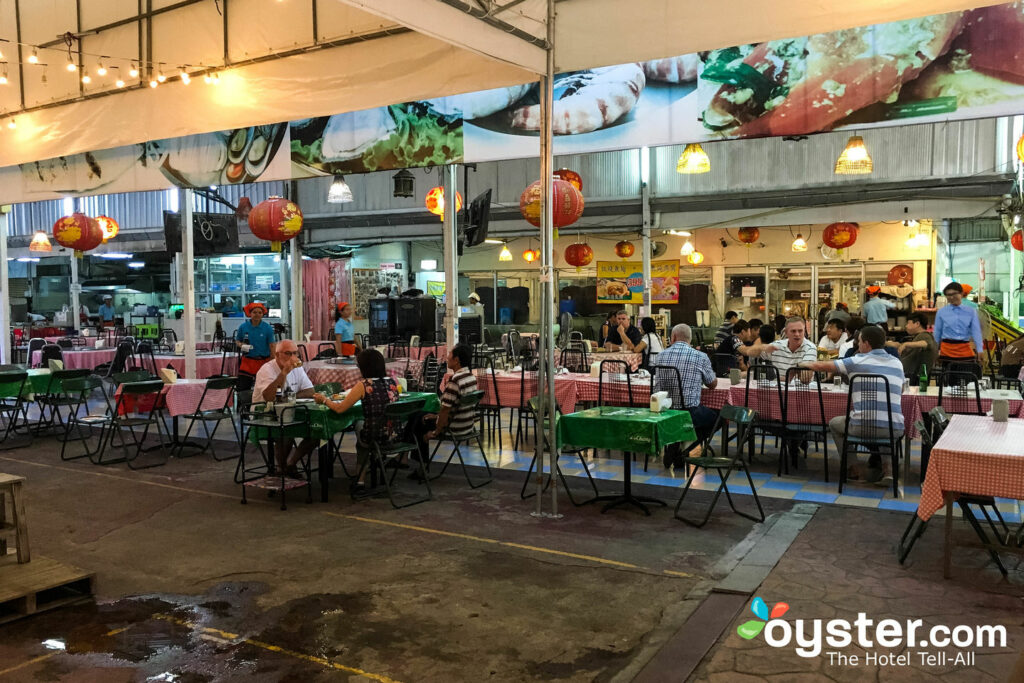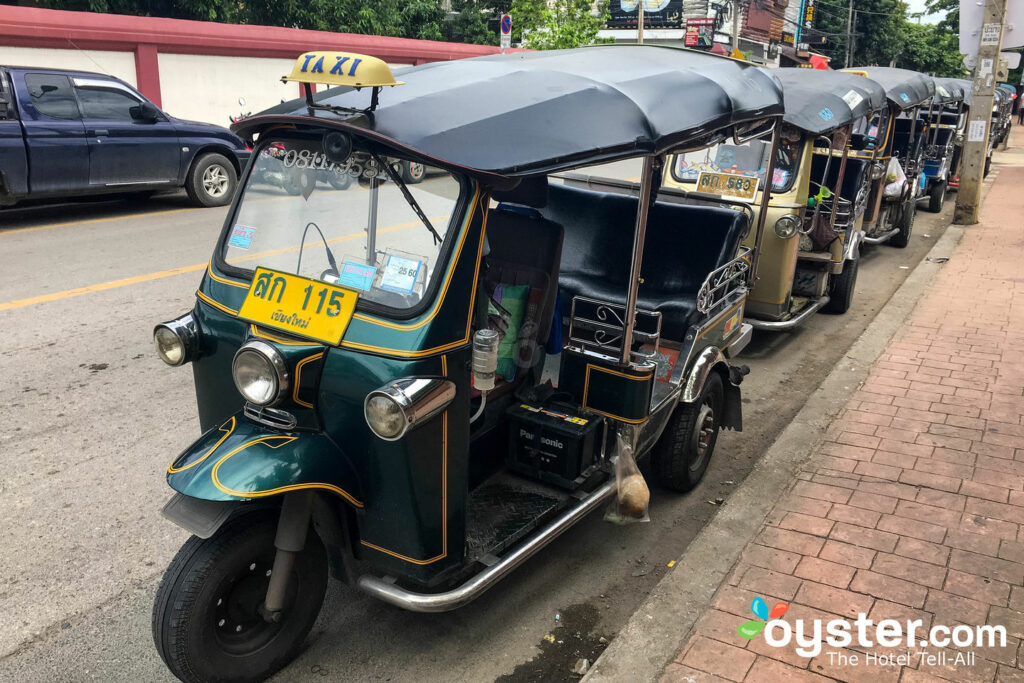
The second-largest city in Thailand after Bangkok, Chiang Mai is an alluring place with serene ancient temples, bohemian cafes, and buzzing night markets. Beyond its moated historic city and bordering metropolitan area, Chiang Mai is surrounded by a rolling, rural rainforest that's home to waterfalls and elephant sanctuaries. Some of the world's most beautiful Buddhist temples are found on either side of the Old City's ancient walls. Shopping streets sell handmade blue-dyed cover-ups, floral-patterned parasols, and kaleidoscopic woven textiles, while food markets lure tourists and locals with troughs of fried snacks and stacks of fresh fruit. The smells of street food and incense swirl with the smack of motorbikes, tuk-tuks, and trucks burning through fuel. Chiang Mai could easily command a dedicated trip of one or two weeks, but for those short on time, a three-day visit provides a satisfying intro. Here, our guide to the perfect three days in Chiang Mai, Thailand's unofficial capital of the north and a delight for lovers of culture, crafts, animals, and nature.
Notice: Undefined offset: 4 in /nas/content/live/stagingstmllc/wp-content/plugins/smartertravel-shared/includes/ads/includes/api.php on line 92
Notice: Undefined offset: 5 in /nas/content/live/stagingstmllc/wp-content/plugins/smartertravel-shared/includes/ads/includes/api.php on line 92
Notice: Undefined offset: 6 in /nas/content/live/stagingstmllc/wp-content/plugins/smartertravel-shared/includes/ads/includes/api.php on line 92
Notice: Undefined offset: 4 in /nas/content/live/stagingstmllc/wp-content/plugins/smartertravel-shared/includes/ads/includes/api.php on line 98
Notice: Undefined index: pass_through_args in /nas/content/live/stagingstmllc/wp-content/plugins/smartertravel-shared/includes/ads/includes/api.php on line 158
Notice: Undefined index: wrapper in /nas/content/live/stagingstmllc/wp-content/plugins/smartertravel-shared/includes/ads/includes/api.php on line 159
Notice: Undefined offset: 4 in /nas/content/live/stagingstmllc/wp-content/plugins/smartertravel-shared/includes/ads/includes/api.php on line 92
Notice: Undefined offset: 5 in /nas/content/live/stagingstmllc/wp-content/plugins/smartertravel-shared/includes/ads/includes/api.php on line 92
Notice: Undefined offset: 6 in /nas/content/live/stagingstmllc/wp-content/plugins/smartertravel-shared/includes/ads/includes/api.php on line 92
Notice: Undefined offset: 4 in /nas/content/live/stagingstmllc/wp-content/plugins/smartertravel-shared/includes/ads/includes/api.php on line 98
Notice: Undefined index: pass_through_args in /nas/content/live/stagingstmllc/wp-content/plugins/smartertravel-shared/includes/ads/includes/api.php on line 158
Notice: Undefined index: wrapper in /nas/content/live/stagingstmllc/wp-content/plugins/smartertravel-shared/includes/ads/includes/api.php on line 159
Day One: Temple-Hopping and Night-Market Shopping
Chiang Mai flourished as the capital of the Lanna kingdom from the mid-1200s to mid-1800s. During its 600-year reign, the city saw the construction of dozens of Buddhist temples. It would take a tuk-tuk or rickshaw to see them all, but many can be seen on a self-guided walking tour through the Old City. Visitors can enter temples for a small fee. (Be sure to wear conservative clothing that covers your shoulders and knees, and be prepared to remove your footwear before stepping inside.) Keep in mind that in the Old City, there are temples on practically every block, and all merit exploration. The ornate Wat Chiang Man is the oldest in Chiang Mai, dating back to the city’s 13th-century founding. Wat Phra Singh is the most famous and arguably the most beautiful, thanks to its glistening gold pagoda, ornate prayer hall, and elevated library. If you want to see Wat Phra That Doi Suthep, an elaborate temple complex on top of a mountain outside of the city, you’ll need to carve out at least three hours. The temple’s overlook offers dramatic views of the sprawling city and the rolling countryside. You can hire a tuk-tuk or songthaew (semi-enclosed pick-up truck) in front of Wat Phra Singh to make the winding, 40-minute drive up to the site.
After a full day of seeing temples, you’re ready for a well-deserved reflexology session, a full-blown craft-buying spree, and an elaborate meal cobbled together by visits to multiple street vendors. All of this can happen at one of Chiang Mai’s many night markets, which are found all over the city. If you’re in town over a weekend, don’t miss the Saturday and Sunday night markets. On Saturdays, the action follows Wua Lai Road by the south city gate. On Sundays, the market starts at Tha Phae Gate on the east side and goes down Ratchadamnoen Road, which is closed to traffic during the event. Along the way, you’ll see the teak-and-stone Wat Phan Tao and the beautiful ruins of Wat Chedi Luang. To eat and drink, you’ll find everything from butterfly pea tea to pork satays, fried quail eggs, and khao soi (the iconic noodle curry dish of northern Thailand). And for sale, there are mango-wood bowls, intricate pillowcases, baskets, and other handmade crafts from around northern Thailand. Masseurs set up right on the sidewalk, so visitors don’t miss any of the action (plus, these are some of the cheapest hourly rates in town). Chiang Mai Night Bazaar, a short tuk-tuk ride east of the Old City, is open every night of the week. Its food, clothing, and handicraft stalls practically butt up against those at the Ploen Ruedee Night Market, Kalare Night Bazaar, and Anusarn Market. Combine these with the shopping centers, and the area is a seemingly inexhaustible hive of places to shop, eat, drink, and find entertainment. Don’t miss the Chiang Mai Cabaret Show, a ladyboy cabaret performance put on at Anusarn Market every night of the week.
Day Two: Cooking Class, More Market Exploration, and a Boxing Match
Chiang Mai’s vibrant foodie scene ranges from unpolished food markets and street carts to vegan/vegetarian hideaways and pricey dining experiences. Adding to the city’s culinary cred are its dozens of cooking schools — nearly 100 in all. Cooking classes are a great way to meet fellow travelers and get an up-close look at the plants, herbs, and spices popularly used in Thai food at on-site gardens or farms, and on guided food shopping tours of nearby markets. After ingredients have been sourced, classes gather in communal kitchens to learn how to prepare national and regional dishes. Throughout the course, guests sit down at large tables together to try their own dishes, like deep-fried spring rolls, Thai basil stir fry, and mango sticky rice. Schools often send guests home with a keepsake cookbook detailing the ingredients used and the recipes made. Half- (lunch or dinner) and full-day courses are available; half-day options are great for travelers in town for three days, as they leave several daytime hours for more exploration.
Dedicate the time before or after the cooking class to browse more markets — the market walkthrough the night before will inevitably incite the urge to see and buy more. Head to the massive (and yes, daunting) Warorot Market (Kad Luang) near the western banks of the Ping River. Vendors at this multistory wholesale market carry all manner of goods, from cheap clothing to crafts, bagged spices, dried fish, and mushrooms. If your stomach can handle anything else, join the lines for spiraling Thai sausages and other snacks. Garden enthusiasts should consider taking a 10-minute tuk-tuk ride north to the Khamthiang Flower Market, where they’ll find magnificent displays of orchids, birds-of-paradise, topiary trees, succulents, ferns, and lichens, as well as clay pots and planters. Consider hiring a vehicle to Nimmanhaemin Road, Chiang Mai’s trendiest spot. In addition to local artisans selling their wares, the area contains chic boutiques, galleries, spas, shopping complexes, and cafes. Grab a drink at an open-air bar, but try to resist the siren call of Chiang Mai’s frenetic nightlife, as tomorrow is an early wake-up call. Swap the city’s pubs, cabarets, and karaoke haunts for a Muay Thai match. Boxing events are on every night at venues all over the city, like Thapae Stadium.
Day Three: Out-of-Town Excursion
Many travelers could happily explore Chiang Mai’s tangle of atmospheric streets and alleyways for days. But there is so much to see outside of the city limits. The valley that holds Chiang Mai is a lush green landscape of rainforests, rolling hills, and waterfalls, dotted with traditional handicraft villages. The surrounding countryside is a haven for active types eager to go hiking, ATV biking, or whitewater rafting; animal lovers who want to get up-close and personal with elephants; and anyone wanting to learn more about the region’s craft-making heritage. Hiking treks often include visits to jungle waterfalls and small villages of Karen hill tribe people. Popular village excursions include trips to the umbrella-making village of Bo Sang and the wood-carving community of Baan Tawai. Farther afield, the large town of Lansang attracts visitors for its spectacular Burmese-style architecture.
The many elephant sanctuaries in the Chiang Mai region provide a truly unforgettable opportunity to interact with a pack of rescued animals and their young. Upon arrival, visitors change into workwear and are given a satchel filled with bananas, which the animals scarf up by the bunch. In addition to hand-feeding the creatures bananas and sugarcane, tour groups go on guided treks through the bush with the animals, and can even give them baths in rivers or giant pools. It’s a transformative experience, but please note that it is crucial to do rigorous research beforehand, as not all facilities treat their animals properly. Do not support an operation that offers elephant riding, an activity that requires the use of bullhooks; only consider those who limit the interaction to feeding, walking, and bathing. Even then, it is critical to ensure the facility treats the animals with the utmost care and respect. Maerim Elephant Sanctuary is widely considered an excellent and compassionate organization, with mahouts who live full-time with the elephants.
Full- or half-day excursions can be booked at one of the local travel agencies in Chiang Mai (found on every corner) or via Viator and TripAdvisor (sister and parent company to Oyster).
You’ll Also Like:
- What to Pack for Thailand (and What to Buy There)
- The Most Beautiful Beaches in Krabi, Thailand
- The Best Itinerary for Thailand
All products are independently selected by our writers and editors. If you buy something through our links, Oyster may earn an affiliate commission.


